Workflow and Bulk Editing in Lightroom
A course by Diego Figueroa González , Photographer, Documentary Maker, Teacher, and Cultural Manager
Joined July 2020

Learn to manage and process photo collections efficiently and professionally for high-volume assignments
If a picture is worth a thousand words, then a photo collection is capable of telling an entire narrative. “Narrating the un-narrated” is how photographer, filmmaker, teacher, and cultural consultant, Diego Figueroa, describes his work. Adobe Lightroom has become his ally along the way, allowing him to create an efficient professional workflow.
In this course, learn how to use Lightroom to reduce your production time for high demand photo projects. Discover the different steps and processes needed for documentary and commercial photography—from development, to editing, to final publication.
What will you learn in this online course?
14 lessons & 15 downloads
- 91% positive reviews (23)
- 907 students
- 14 lessons (2h 57m)
- 15 additional resources (3 files)
- Online and at your own pace
- Available on the app
- Audio: Spanish
- Spanish · English · Portuguese · German · French · Italian · Polish · Dutch · Turkish · Romanian · Indonesian
- Level: Beginner
- Unlimited access forever
What is this course's project?
Fulfill the entire post-production process of two high-demand photo collections, including a commercial event and a documentary series. Learn to select, catalog, and edit using an optimized workflow.

Who is this online course for?
For professional photographers or photography enthusiasts who use Adobe Lightroom as their main photo editor.
Requirements and materials
To complete this course, basic knowledge of Lightroom is required.
Regarding the material, you will need a computer with Adobe Lightroom and Adobe Bridge, as well as an unedited, personal or commercial photo collection (ideally in RAW format) which, due to the amount of photographs, must be edited using a high-demand workflow.

Reviews

Diego Figueroa González
A course by Diego Figueroa González
Born in Santiago de Chile, Diego Figueroa has dedicated his life to photography and design, specializing in documentary photography, editing, and post-production for photo collections and commissions. In 2015, he and seven friends founded Migrar Photo, today one of the most recognized photography groups in Latin America. That same year, he won the award for Best Photo of the Year at Chile's National Photojournalism Exhibition.
His work has been published in important Latin American and international publications, including El País, El Mundo, El Universal, Le Monde Magazine, Vice, CIPER, Footer, JOIA, Red Bull, Agencia EFE, Interferencia, and more. In recent years, he has started teaching, giving workshops commissioned by Migrar Photo throughout Mexico, Colombia, Argentina and Chile.
Content
-
U1
Introduction
-
Introduction
-
Influences
-
What will we do in the course?
-
-
U2
Organizing and preparing your files
-
Mass development and photographic cataloging
-
Introduction to Adobe Bridge
-
Introduction to Adobe Lightroom
-
-
U3
Batch editing, cataloging and development
-
Selection of the photographic record of the event
-
Documentary photographic selection
-
Catalog import and creation
-
Reveal of the photographic record of event 1
-
Reveal of the photographic record of event 2
-
Reveal of the documentary series
-
-
U4
Export, send and publish
-
Publishing media
-
Massive export
-
-
FP
Final project
-
Workflow and Bulk Editing in Lightroom
-
What to expect from a Domestika course
-
Learn at your own pace
Enjoy learning from home without a set schedule and with an easy-to-follow method. You set your own pace.
-
Learn from the best professionals
Learn valuable methods and techniques explained by top experts in the creative sector.
-
Meet expert teachers
Each expert teaches what they do best, with clear guidelines, true passion, and professional insight in every lesson.
-
Certificates
PlusIf you're a Plus member, get a custom certificate signed by your teacher for every course. Share it on your portfolio, social media, or wherever you like.
-
Get front-row seats
Videos of the highest quality, so you don't miss a single detail. With unlimited access, you can watch them as many times as you need to perfect your technique.
-
Share knowledge and ideas
Ask questions, request feedback, or offer solutions. Share your learning experience with other students in the community who are as passionate about creativity as you are.
-
Connect with a global creative community
The community is home to millions of people from around the world who are curious and passionate about exploring and expressing their creativity.
-
Watch professionally produced courses
Domestika curates its teacher roster and produces every course in-house to ensure a high-quality online learning experience.
FAQs
What are Domestika's online courses?
Domestika courses are online classes that allow you to learn new skills and create incredible projects. All our courses include the opportunity to share your work with other students and/or teachers, creating an active learning community. We offer different formats:
Original Courses: Complete classes that combine videos, texts, and educational materials to complete a specific project from start to finish.
Basics Courses: Specialized training where you master specific software tools step by step.
Specialization Courses: Learning paths with various expert teachers on the same topic, perfect for becoming a specialist by learning from different approaches.
Guided Courses: Practical experiences ideal for directly acquiring specific skills.
Intensive Courses (Deep Dives): New creative processes based on artificial intelligence tools in an accessible format for in-depth and dynamic understanding.
When do the courses start and when do they finish?
All courses are 100% online, so once they're published, courses start and finish whenever you want. You set the pace of the class. You can go back to review what interests you most and skip what you already know, ask questions, answer questions, share your projects, and more.
What do Domestika's courses include?
The courses are divided into different units. Each one includes lessons, informational text, tasks, and practice exercises to help you carry out your project step by step, with additional complementary resources and downloads. You'll also have access to an exclusive forum where you can interact with the teacher and with other students, as well as share your work and your course project, creating a community around the course.
Have you been given a course?
You can redeem the course you received by accessing the redeeming page and entering your gift code.



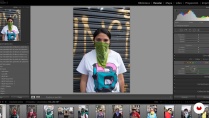
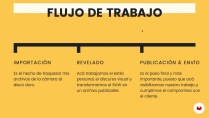
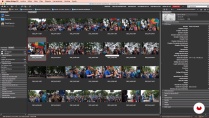
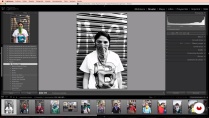
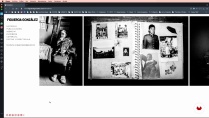
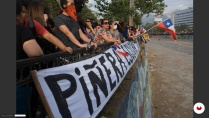

Detallado, completo, claro.
bien
Los consejos sobre el flujo de trabajo son muy prácticos.
Gracias Diego por tu valioso conocimiento. Recomiendo este curso!
Muito bom!